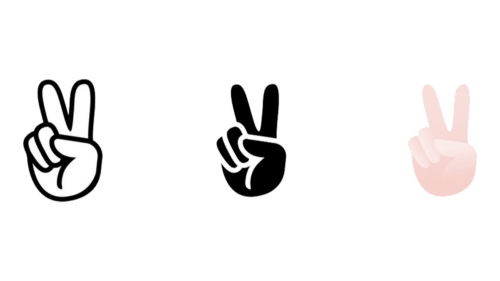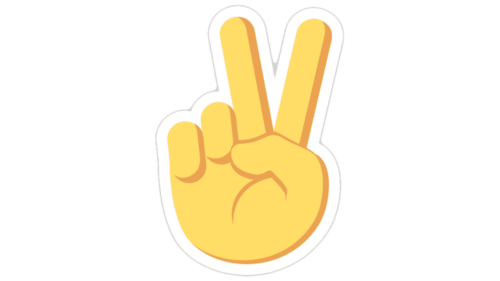☮️ ✌️
The pacifist sign is one of the most recognizable in the world. But few people know that its official name is the CND sign, and even fewer know the story behind it. Pacifica, the international symbol of peace, was created in 1958 by British artist, designer and Royal College of Art graduate Gerald Holtom. The logo was a symbol of nuclear disarmament, and the British Campaign of Nuclear Disarmament (hence the acronym CND sign) adopted it that same year.
The Peace Sign can be found anywhere, and the Unicode emoji set is no exception. Therefore, today we will talk in detail about in what situations it will be appropriate to add an emoticon with this sign in your messages and posts. Namely about two variations of this sign:
☮️ The “Pacific” emoticon was assigned the code U+262E U+FE0F, with which it was added to the Unicode 1.1 standard characters section in 1993.
✌️ The “Gesture V” emoticon was assigned the code U+270C U+FE0F, with which it was added to the People and Body section of the Unicode 1.1 standard in 1993.
Meaning of the Peace Emoji
The Peace Sign has been an international symbol of peace and the anti-war movement for half a century. The sign became popular due to its simplicity and functionality, without being used as a trademark. However, the creative industry has never forgotten about the symbol.
In the 1960s, it became an international anti-war symbol: the Peace sign was especially popular with hippies, who accompanied it with the inscription “Make love, not war”.
The creator of the legendary symbol himself, Gerald Holtom, wrote that he was inspired by the image of the hero of Goya’s painting “The shooting of the rebels on the night of May 3, 1808”: “I depicted myself, a man in despair, with his arms down and outstretched to the sides, like a peasant in front of Goya’s firing squad” – although in Goya’s painting the peasant stands with his arms raised to the sky.
According to the second version, the Peace Sign is a combination of semaphore signals N and D, which coincide with the first letters of the alphabet. In the semaphore alphabet, the letter N is transmitted by holding two flags down at an angle of 45 degrees, and the letter D is transmitted by raising one flag vertically upward and lowering the other flag equally vertically downward.
In today’s world, the Peace sign and its meaning can be conveyed not only by a graphic image from the 1950s, but also by two upraised fingers. This gesture is also called V or Victory.
The Use of the Peace Emoji
As for the use of the Peace Emoji, there are several options. First, in its primary meaning, this emoji can be used in messages and posts against war and violence. World Peace, No War!
The second variant of using Peace Sign is a tribute to the Hippie movement. The youth subculture of hippies was born amidst the protest sentiments that prevailed in the American community of that period. Hippie style is the maximum reflection of the protest moods of the 1960s and the desire to build a new system of relationships between people, based on the philosophy of freedom and love.
It is also appropriate to use this emoji when you want to share your interlocutor’s kindness and all the best. As for the V gesture, it is often seen as a substitute for greeting or farewell.
Conclusion
As you can see, not all signs change their meanings over time. There is a so-called category of Iconic Signs that will always be as close to their original meaning as possible. And Peace Sign belongs to this category.
It is very difficult to come up with a negative connotation in this emoji, so use it as a wish for peace and goodness. Or, in the extreme case – as a visual representation of hippie style, love and freedom.









